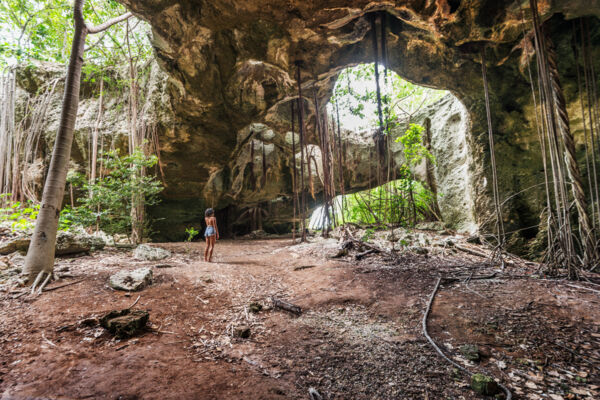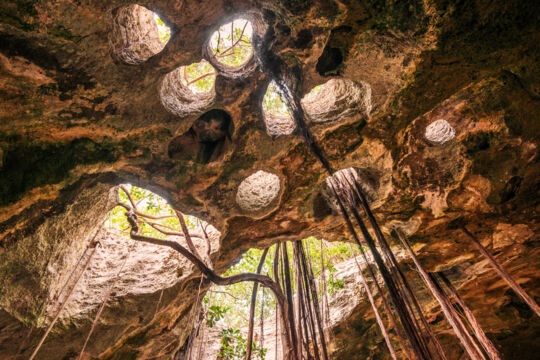Indian Cave
Middle Caicos
Indian Cave is a large and beautiful single-gallery cave with many openings and skylights. The attraction is located on Middle Caicos off the primary road that leads into the island. Nearby is the popular beach and coast of Mudjin Harbour.
Like nearly all sinkholes and caves found in the Turks and Caicos, Indian Cave was created by what is called the Karst process: the slow action of slightly acidic rainwater dissolving the soft limestone as it drained into the water table.
Indian Cave will delight nature enthusiasts. Barn owls, bats, Cuban crows, yellow-crowned night herons, and smooth-billed anis often visit the area, and giant blue land crabs make their homes in the soft, damp floor of the cave. Along with many native plants, papaya trees and the shortleaf fig both grow at this geological formation.
Due to its ease of access and no entry fee, Indian Cave is definitely worth a quick visit.
History

There is evidence that human habitation occurred at Indian Cave during the pre-Columbian period of Turks and Caicos history. However, it’s not conclusively known if the cave was continually inhabited, or if it was only used as a shelter during storms or for some other special purpose.
Archeological digs conducted here in the late 1990s have revealed many interesting findings. Along with some shards of ancient pottery, bones and fossils of quite a few animals were uncovered, including an extinct tortoise and giant iguana, small reptiles, owls, parrots, and hawks. The decay of the bones suggests that the tortoise was alive on Middle Caicos within the last few centuries.
Visiting Indian Cave
Indian Cave is about a 38-minute drive from the North Caicos Ferry terminal at Bellefield Landing (23 miles, or 37 kilometers). The village of Conch Bar is about half a mile (1 km) east.
It's essentially required to rent a car if you plan to visit. Taxi service from the ferry or the hotels on neighboring North Caicos will be costly. The exception is if you're staying at the Dragon Cay Resort at Mudjin Harbour.
After passing the Dragon Cay Resort, continue down the road for 0.5 miles (0.8 km). Turn off onto the unpaved stretch on the left. The cave entrance is about 100 feet (30 m) from the parking area.



